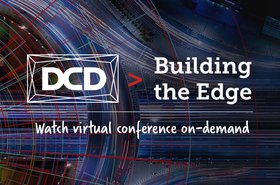We sat down with Cole Crawford, Founder and CEO of Vapor IO ahead of our panel ‘Will the Covid-19 pandemic precipitate a rapid expansion of edge?’. We talked about Vapor IO’s role in the rollout of edge, and whether he thinks COVID-19 is acting as a catalyst to get more organizations interested in investment and deployment of edge infrastructure.
Crawford founded Vapor IO in 2015, wanting to solve for the middle mile of the wireless and wireline worlds, where data sovereignty, velocity and gravity culminate in a new paradigm shift. Vapor IO looks at the core to edge data continuum, and as Crawford describes it getting ‘more internet into more places’.
Tune into our panel: ‘Will the Covid-19 pandemic precipitate a rapid expansion of edge?’ on May 27th at 3pm BST.
Pandemics, problems and possibilities
Crawford says that Covid-19 has accelerated many of the projects Vapor IO has been working on with its partners and customers. Increased demand on data centers has saturated backbone networks in the US and across the globe. We’ve seen many services like Netflix reduce streaming quality to help operators cope.
For Vapor IO, this is the inflection point of being able to build autonomy into infrastructure. Many systems that can be contextualized and virtualized can also be automated with enough data available. While Covid-19 is a tragic event, it offers the industry an opportunity to focus on the autonomy of infrastructure.
Vapor IO is managing well, Crawford thinks. Being a consumer of its own technology, many of its processes and rollouts are automated. Crawford mentioned how people water down the edge to being a modular data center near a key point like a factory floor, but this isn’t the right way to think about it. He believes edge is a massively distributed grid of interconnected infrastructure that is logically centralized.
Vapor IO has used its knowledge of software and what's happening in racks to institute processes that means its rollout does not require many people. Most of Vapor's rollout plans are done remotely, and for the most part - completely autonomously. Human involvement is only necessary where a data center has not been physically built yet.
Role of the big players
One topic we are tasking people to grapple with is the role of large hyperscalers in the rollout of edge. Crawford says “the candle is burning at both ends” whereby hyperscalers are working in tandem with smaller organizations to facilitate the rollout in different ways. Things like GDPR and data sovereignty do impact on how effectively and quickly the edge can be rolled out in many ways.
Crawford says that if you’re not solving resiliency for routing, instead relying solely on redundancy and fault tolerance your projects won’t work if you don’t have the economies of scale. The current infrastructure systems solve for a mix of fault tolerance and being highly available. It will take a team effort to effectively integrate edge infrastructure across the globe. Global distribution of the edge will require a shift of thinking to microsecond transmissions, and this will be true for metro areas, sub-metro areas and even rural areas.
Weight of the world
For Vapor IO there is an increasing demand to be able to ensure timely deployment for companies that support the backbone of the internet. Mechanical things break, and Vapor IO needs to ensure that they continue to work on and provide infrastructure that can be relied on.
This is working in tandem with Vapor IO’s efforts to ensure that people are kept safe and a portion of the population can remain working at home. All of this requires infrastructure that works and as Crawford says “it takes wires to offer wireless”.
The future of edge technology
Crawford believes that the very definition of edge will propagate out further. Most experiences, including mobile phones will render software and operating systems provided by the edge.
A lot of the compute that devices deliver will need to be network attached. We are already seeing some of this trend with devices like drones and autonomous vehicles, which may only rely more and more on edge networks to operate as time goes by.
Lessons from the past
Crawford says he’s had the opportunity to be at the cross-section of some huge inflection points over the past decade. Being one of the co-founders of OpenStack, and the co-founder of the Open Compute Project (OCP) while at Facebook has reinforced the idea that as technology becomes commoditized, it also becomes democratized.
We can look to hyperscalers to make some positive impacts on the industry. We have seen how they have used their capital investments to build more efficient data centers. This has resulted in data centers that use less energy and generate less emissions. Crawford also believes that as more people get involved in the technology sector, that democratization of the technology will happen naturally.
Opportunities to learn
Crawford says that Covid-19 has further demonstrated the idea that human safety is paramount - for data center operators the role of autonomy should play a greater part, not only to improve efficiency but to protect people. Vapor IO is providing an opportunity for the world to automate processes and critical infrastructure.
The panel discussion will facilitate open discussion Crawford hopes, and sharing his ideas and receiving ideas from others will allow Vapor IO to action any hurdles it may be facing. Getting subject matter experts in the same room (or virtual conference) will allow everyone to take away tools they can use to solve problems in their own spaces.
You can hear Cole Crawford and our other panellists on May 27th from 3pm - 4pm BST by registering for the free session.

